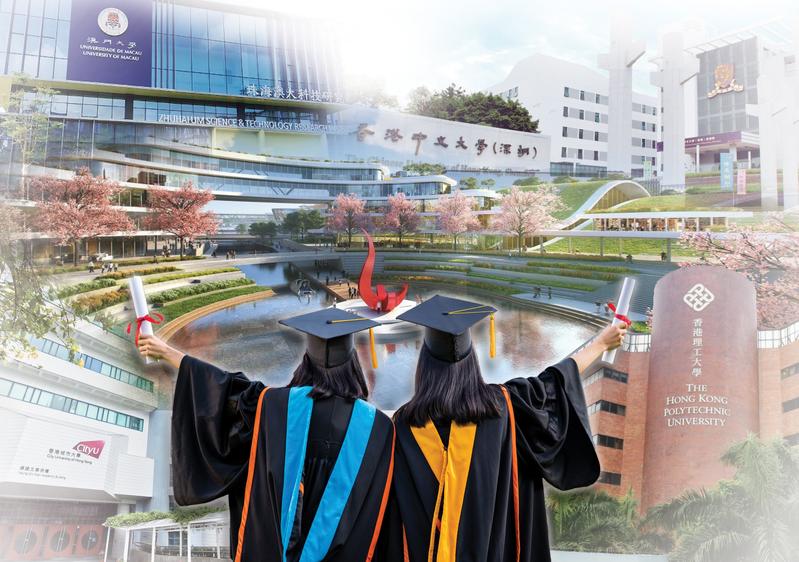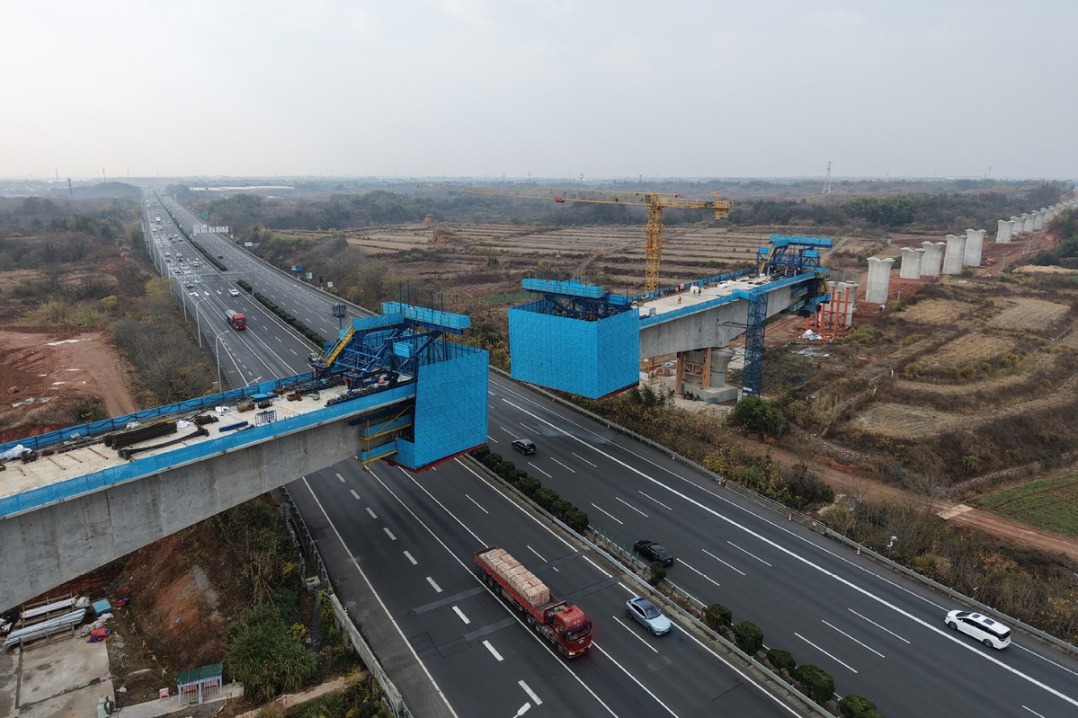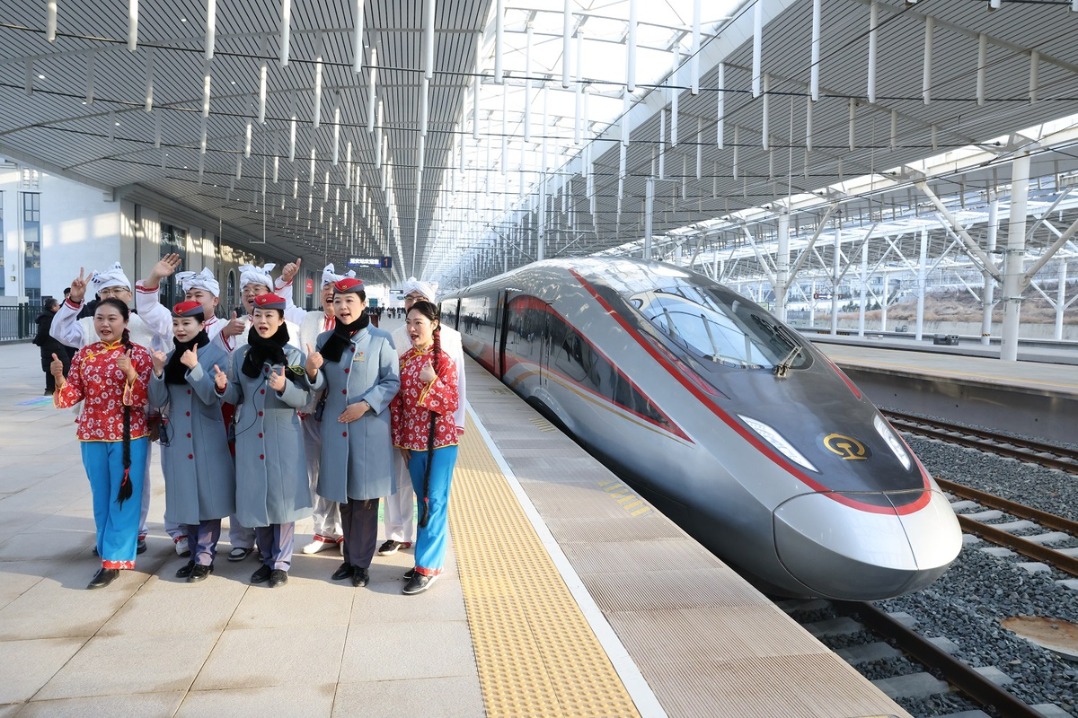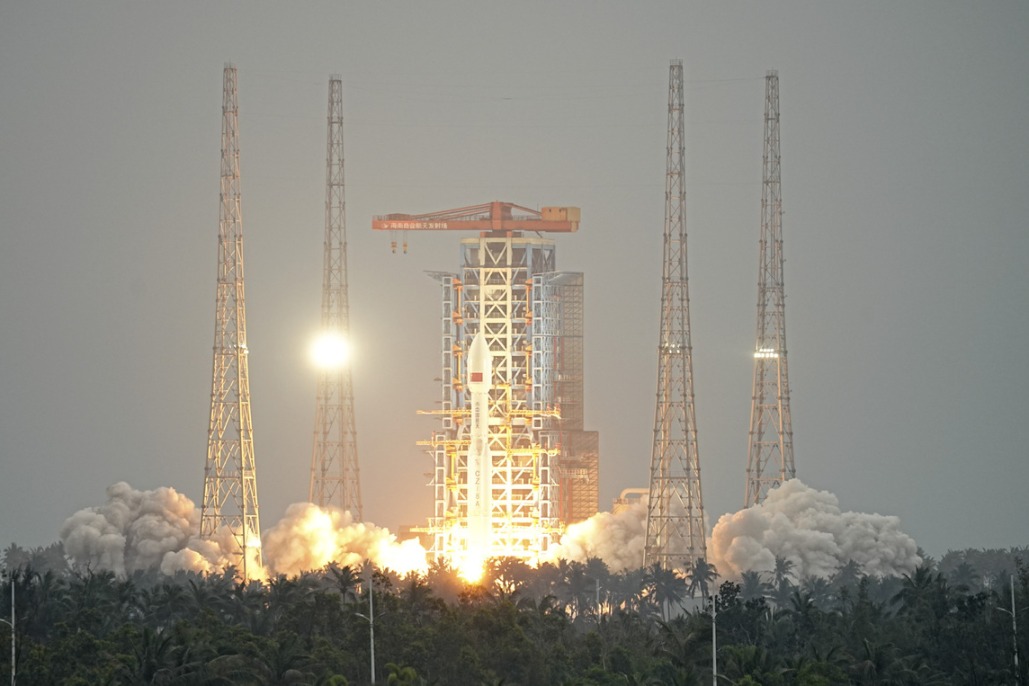Higher education is means to boost region's advancement

Collaboration among the universities in the 11-city cluster will kick-start the region's technological capacity and potential, experts predict. Zhou Mo reports from Shenzhen.

Since its reunification with the motherland 24 years ago, Hong Kong has been a success story on the back of the country's stellar economic growth, with collaboration between the Chinese mainland and the special administrative region being carried out in multiple fields.
As the 14th Five-Year Plan (2021-25), which gives Hong Kong a greater role to play in the country's next stage of development, unfolds this year, the SAR will embrace an even brighter and promising future. Enhanced cross-border cooperation is expected in a wider range of fields, including finance, technology, culture, medical care and education, under the grand Guangdong-Hong Kong-Macao Greater Bay Area plan.
Higher education is one of the fields that is grabbing increasing attention. Universities and colleges are the cradle of nurturing the high-caliber talent who could determine the future of the Greater Bay Area. Cooperation on higher education between the mainland and Hong Kong is gaining steam — mainly manifested by the mounting wave of Hong Kong and Macao universities setting up campuses or branches in Guangdong province.
Experts and scholars believe the Greater Bay Area has reached a development stage at which scientific innovation plays a key role in driving its new round of growth. Integrated development between Guangdong and Hong Kong universities could leverage their respective strengths and unleash the region's technological and innovation capacity to the fullest extent, fueling high-quality development in the region, they say.
Since the launch of the Greater Bay Area development blueprint in February 2019, which made clear support for Guangdong, Hong Kong and Macao to work together on running universities, cross-border cooperation in the area has sped up.
Over the past two years, at least eight projects have been set up or are in the pipeline, including The Hong Kong University of Science and Technology in Guangzhou, The University of Hong Kong in Shenzhen, City University of Hong Kong in Dongguan, The Hong Kong Polytechnic University in Foshan, Macau University of Science and Technology in Zhuhai, and The Open University of Hong Kong in Zhaoqing.
The development guideline for higher education cooperation in the Greater Bay Area, jointly issued by the Ministry of Education and Guangdong provincial government in December, projected a clearer vision of what the sector would be like in coming years.
According to the guideline, a batch of world-class universities will be built in the Greater Bay Area by 2035. A number of original scientific achievements that can have significant impact on the world's technological development and the progress of human civilization will be created by then. With those developments, the 11-city cluster will become a role model for the world's cooperative and innovative development of higher education, the guideline stated.
Long-term vision put in place
The Chinese University of Hong Kong, Shenzhen is one of the two cross-border cooperative projects that have already come into operation in the Greater Bay Area. The other is Beijing Normal University-Hong Kong Baptist University United International College in Zhuhai.
CUHK-Shenzhen President Xu Yangsheng said the first thing he thought about as the university's construction began was what kind of talent the Greater Bay Area needs.
"We didn't think merely about nurturing talent for Hong Kong or for Shenzhen. What we focused on was nurturing talent for the broader Greater Bay Area, the South China region, to equip it with useful people for its development in 20 years' time," he told China Daily.
"We made extensive research on various industries and sectors. Then we decided we should set up an internationalized, research-focused and inter-disciplinary university."
The university now serves as a major platform for promoting cross-border scientific research cooperation in a range of fields, including artificial intelligence, big data, and biomedicine.
"In the future, we will put more focus of our cross-border collaboration on the research side, particularly in such areas as material, environment, chemicals, energy, robotics and financial technology," Xu said.
He also said that the grooming of high-level talent for the Greater Bay Area requires close cooperation between Shenzhen and Hong Kong.
"Development of the Greater Bay Area requires interdisciplinary talent from all around the world. Although Shenzhen has been growing fast over the past 10 years, it is not able to nurture such a large number of talent by itself. Hong Kong has a lot of experience to offer in the educational field, with a number of prestigious universities and a strong pool of teaching staff," he said.
"In this aspect, Shenzhen should learn from Hong Kong. Cooperation between the two cities will have a profound impact on talent cultivation in the Greater Bay Area."
In the latest QS World University Rankings, released last month, five universities in Hong Kong made it to the top 100 list. None in Guangdong was included.
To push cross-border educational cooperation forward to a higher level, Xu said he believes two key factors need to be taken seriously.
"One is mutual respect. Education development is a long process. Different places have different educational systems. It is important to respect the differences and carry out cooperation based on the foundation," he said.
"Second is mutual coordination. Shenzhen and Hong Kong should seek differentiated development in school- and university-building to nurture different types and levels of talent and avoid vicious competition. That requires mutual coordination between the two sides."
Hong Kong universities' setting up branches or campuses in Guangdong is beneficial to both sides, said Hu Gang, a professor at Jinan University in Guangzhou.
The move could overcome the weakness of Guangdong universities in engineering education, helping the Greater Bay Area better push forward with industrial upgrades; on the other hand, the sound educational resources provided by Guangdong makes it a favorable place for Hong Kong universities to run businesses, he said.
Hong Kong is acting like a bridge, helping Guangdong better connect with an international higher education system, he added.
Lin Jiang, a professor at The Center for Studies of Hong Kong, Macao and Pearl River Delta of Sun Yat-sen University in Guangzhou, stressed the importance of aligning education to the needs of industries. Universities in the Greater Bay Area should be built in a way that could serve industrial transformation and upgrade and development of emerging industries in the region, he said.
Integrated development is also vital in the process, he added. "Take the Greater Bay Area University that is being built in Dongguan, for example. It is impossible to make it a high-level university with merely Dongguan's efforts," Lin said. "It is only with joint efforts by Dongguan, Shenzhen and Hong Kong — taking advantage of Dongguan's edge in manufacturing, Shenzhen's strength in technological innovation and Hong Kong's rich innovation resources from all over the world — that the university can be built into a high-level one."
Two-way cooperation needed
While the introduction of Hong Kong and Macao universities into the mainland is widely believed to be a remedy for the Greater Bay Area to catch up with the other three bay areas — Tokyo, New York and San Francisco — in the world in nurturing and attracting top-end talent needed for its high-quality development, some scholars pointed out the importance of a two-way flow of cooperation.
"Cross-border cooperation on higher education in the Greater Bay Area has largely been one-way, with Hong Kong universities setting up campuses or branches on the mainland," said Li Qing -quan, president of Shenzhen University.
Li said earlier that Shenzhen University is considering setting up a campus in Hong Kong. "This will deepen Shenzhen-Hong Kong cooperation and create favorable conditions for young people in Hong Kong to develop their careers on the mainland. At the same time, it will promote differentiated competition between universities in Hong Kong and help cultivate high-end talent — people who know the country well and love it," he said.
Jinan University's Hu echoed that view, saying a two-way flow is necessary, but such a project takes time to get off the ground.
Deepened educational integration across the border is also hailed by employers, who say it will lay a solid foundation for them to develop in the Greater Bay Area as expansion of business in the region requires more talent with "local insights" and "international exposure."
Daniel Chan, head of Greater Bay Area at HSBC, said, "With increased focus on economic integration across Greater Bay Area in the near future, we expect more people flow and business activities, leading to stronger demand for cross-border banking services," adding that talent with "both local insights as well as international exposure" will "effectively support our growing cross-border business opportunities".
The British bank has established three global operations centers in Guangzhou and Foshan, providing banking service support, technology development, data and analytics for its operations on the mainland, and in Hong Kong, Macao and other territories.
Chan also offered his advice on facilitating a cross-border flow of talent in the Greater Bay Area. Greater efforts need to be made on policy coordination between governments and on perfecting a business-startup ecosystem, he said.
"We would like to see better policy coordination between Guangdong and the two SARs to encourage more free flow of talents within the area. For example, a mutual recognition system that acknowledges the professional licenses across the area will create more opportunities for young professionals to pursue development in the Greater Bay Area," he said.
"We would also like to see more collaboration and exchanges among the business startup ecosystems across Hong Kong, Macao and the Pearl River Delta, which is crucial to stimulate more innovation and technology advancement as well as talent development."
- Law aimed at bolstering standard Chinese language education passed
- Connecting cities, changing lives
- World's longest expressway tunnel opens to traffic
- Taiwan lawmakers vote to pass motion to impeach Lai
- Xi: Steadfastly implement conduct rules
- Beijing community leads the way in grassroots governance





































